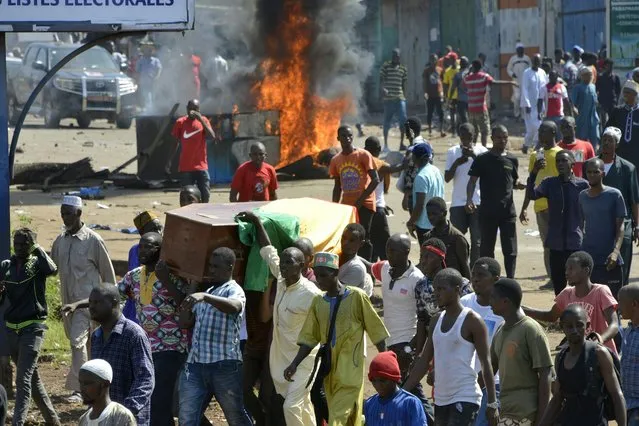
People carry coffins during the funeral after last street protests and unrest that resulted in nine deaths in Conakry, on November 4, 2019. Crowds of protesters marched through the Guinean capital of Conakry on October 24, 2019 in the latest round of demonstrations against President Alpha Conde, accused of trying to circumvent a bar on a third term in office. (Photo by Cellou Binani/AFP Photo)

Clouds gather but produce no rain as cracks are seen in the dried up municipal dam in drought-stricken Graaff-Reinet, South Africa, November 14, 2019. (Photo by Mike Hutchings/Reuters)

Members of Dance Centre Kenya (DCK) perform during a production of the “Nutcracker”, a ballet primarily performed during the Christmas period as their annual show, along with the Nairobi Philharmonic Orchestra with foreign guest musicians at the National Theater in Nairobi, on December 7, 2018. DCK, founded by a few passionate families in early 2015, teach over 700 students at 3 studios in Nairobi, and provides lessons based on the Royal Academy of Dance Syllabus. Selected students in various schools and slums receive scholarships to promote developing their talents. (Photo by Yasuyoshi Chiba/AFP Photo)
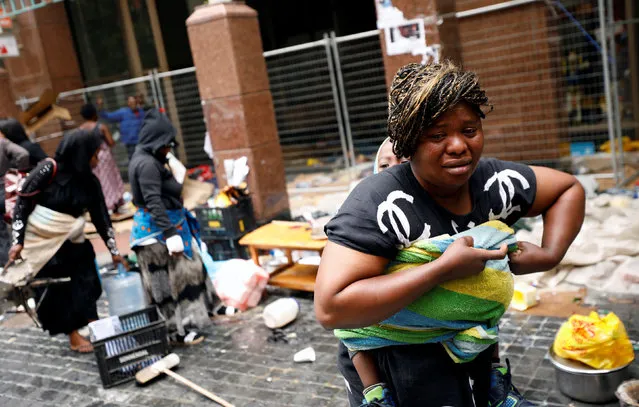
Refugees gather their possessions after they were evicted from a sit in protest against xenophobia outside the United Nations High Commissioner for Refugees (UNHCR) offices in Cape Town, South Africa, October 30, 2019. (Photo by Mike Hutchings/Reuters)
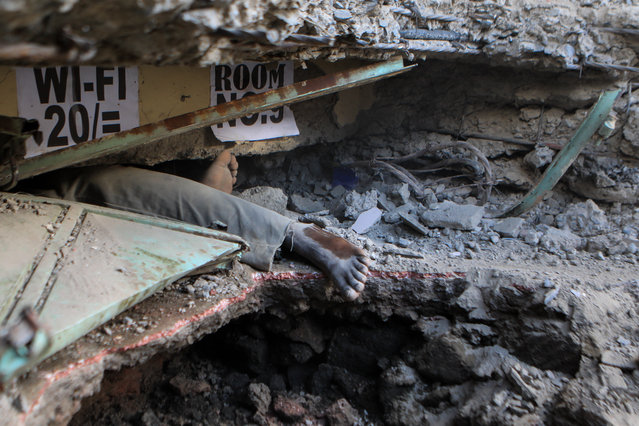
A view of the leg of a man trapped inside a collapsed six-storey building in Nairobi, Kenya, 06 December 2019. Local media reported that several people are feared trapped as the rescue operation continues. (Photo by Daniel Irungu/EPA/EFE)
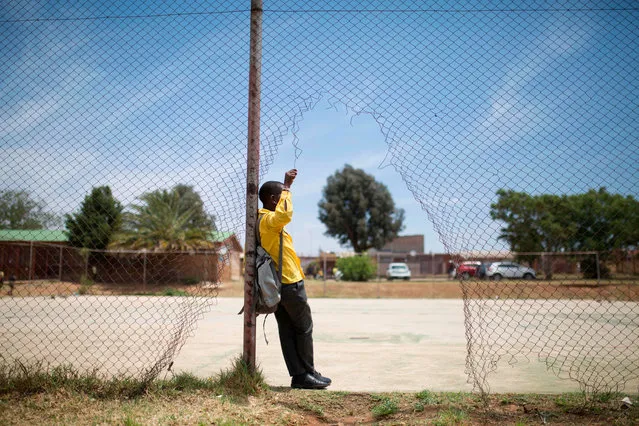
A student from the Soweto Rugby School Academy can be seen resting before practice in Soweto, South Africa, on November 6, 2019. These players are part of the Soweto Rugby School Academy (SRSA), one of the three rugby schools of Soweto, a black township of Johannesburg housing more than 1.3 million people. Founded in 2016 the SRSA welcome some 250 students of age between 8 and 19, of which almost 50 are girls. (Photo by Guillem Sartorio/AFP Photo)
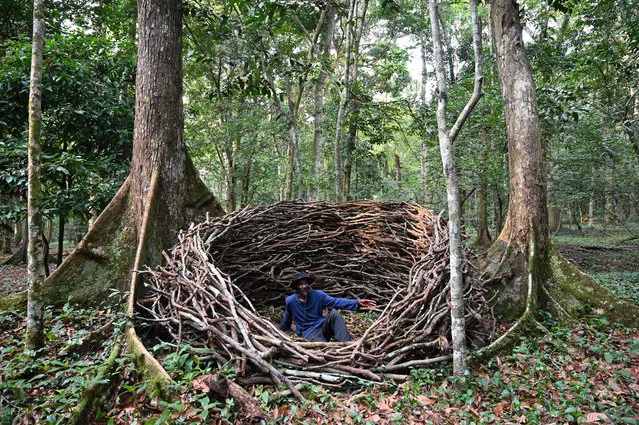
The event's artistic director, Ivorian sculptor Jems Koko Bi speaks in the Banco National Park on December 4, 2019 in Abidjan before the opening of the first Green Arts Biennale. Ephemeral sculptures by international artists in the middle of the tropical forest is the challenge of the first Green Arts biennial that took place in the Banco National Park in Abidjan The Banco National Park extends over nearly 3,500 hectares in the heart of Abidjan, just a few kilometres from the Plateau business district between the two main working class districts of Abobo and Yopougon. (Photo by Issouf Sanogo/AFP Photo)

A group of female priests perform in Banco National Park on December 08, 2019 in Abidjan during the opening of the first Green Arts Biennale. Ephemeral sculptures by international artists in the middle of the tropical forest is the challenge of the first Green Arts biennial that took place in the Banco National Park in Abidjan The Banco National Park extends over nearly 3,500 hectares in the heart of Abidjan, just a few kilometres from the Plateau business district between the two main working class districts of Abobo and Yopougon. (Photo by Sia Kambou/AFP Photo)

A man stands on top of a mountain of garbage at Dandora dumpsite, Nairobi, Kenya, 05 December 2019 (issued 10 December 2019). Many slum dwellers scavenge in a hazardous environment of Dandora for a living where they make average of 200-400 Kenya shillings (2-4 US dollars) a day. According to Seth Munyambu, the Quality Environment manager of the WEEE Center (Waste Electrical and Electronic Equipment) which is the only legally registered e-waste recycling company in Kenya, the company processes 240-280 tons of e-waste per year, less than one percent of the total amount of 44,000 tons generated annually by the country. While the facility has the capacity to handle 75 tons monthly, only 20-25 tons are received from disposers. Much of the e-waste in Nairobi ends up in dumpsites such as Dandora where people scavenge for valuables including e-waste which are rarely disposed in proper manners. 'Awareness among the public and the law specifically addresses the e-waste are the key', Munyambu says. A 2019 United Nations report says some 50 million tonnes of e-waste is being thrown away each year, posing a serious threat to the environment and human health worldwide. The UN Climate Change Conference (COP25) is currently taking place in Madrid, Spain. (Photo by Dai Kurokawa/EPA/EFE)

Members of “Project Elimu” perform as a part of their presentation in a street of Kibera slum in Nairobi, Kenya, on December 14, 2019. Project Elimu is Kenyan Non-Profit Organization founded by former professional Kenyan dancer Mike Wamaya to provide wide range of extracurricular activities to schools within informal settlements to empower children and teachers as over 400 children from 25 different schools participate. (Photo by Yasuyoshi Chiba/AFP Photo)
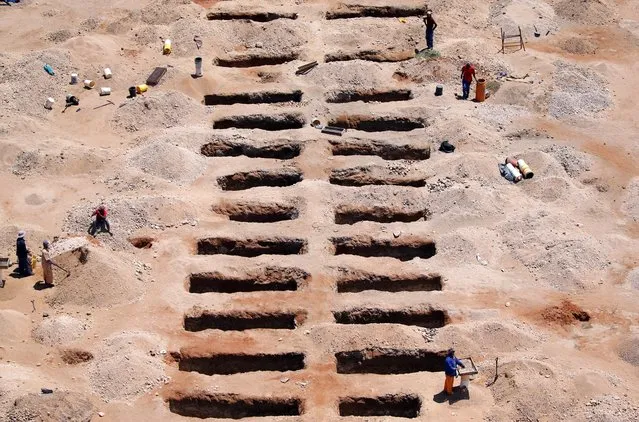
Batho Pele Artisanal Mining Cooperative miners are seen from the air as they mine for diamonds in Kimberley, South Africa, October 22, 2019. (Photo by Sumaya Hisham/Reuters)
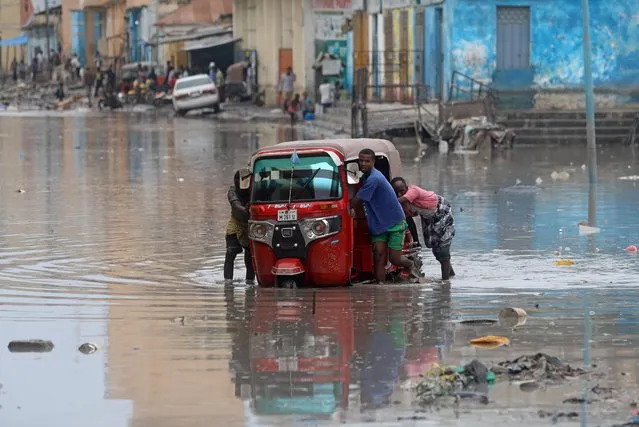
Somali men push their rickshaw through flood waters after a rainfall in Mogadishu, Somalia November 26, 2019. (Photo by Feisal Omar/Reuters)
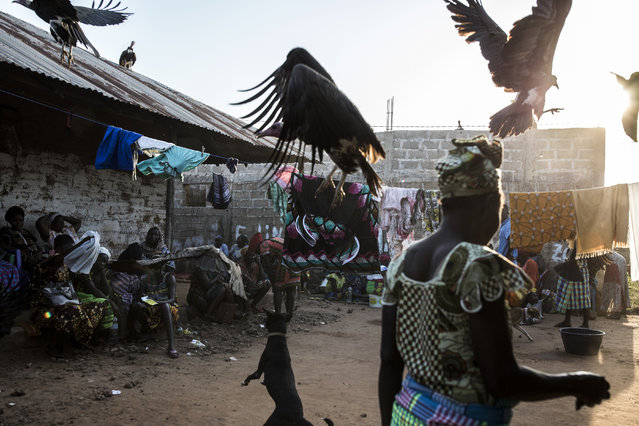
Hooded vultures are chased away by a dog as they look for scraps after a family slaughtered a cow at a funeral celebration in Bissau on November 26, 2019. Tens of thousands of Hooded Vultures flock to the city of Bissau to in search of food left behind in heaps of garbage or around market areas. (Photo by John Wessels/AFP Photo)
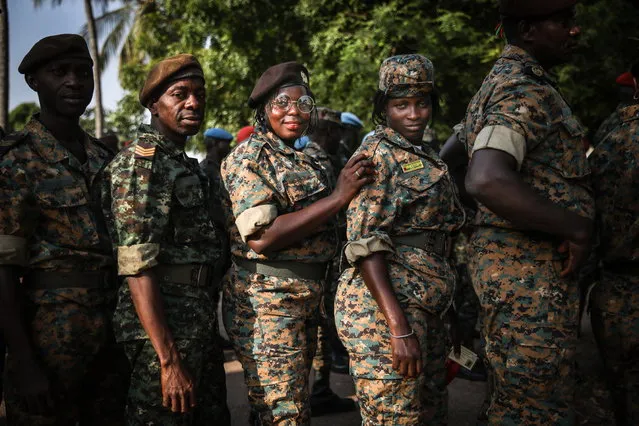
Military and security forces queue to vote in advance outside a ballot station at Bissau, Guinea-Bissau, 21 November 2019. Presidential elections will be held in Guinea-Bissau on 24 November 2019 with a round between 12 candidates from a range of parties with a second round planned for 29 December if no candidate receives more than 50 percent of the vote. (Photo by Andre Kosters/EPA/EFE)

A Gnawa traditional group performs in the city of Essaouira on December 14, 2019, to celebrate the decision of adding the Gnawa culture to UNESCO's list of Intangible Cultural Heritage of Humanity. Gnawa culture, a centuries-old Moroccan practice rooted in music, African rituals and Sufi traditions, was added to UNESCO's list of Intangible Cultural Heritage of Humanity earlier in the week. Gnawa refers to a “set of musical productions, fraternal practices and therapeutic rituals where the secular mixes with the sacred”, according to the nomination submitted by Morocco. Often dressed in colourful outfits, Gnawa musicians play the guenbri, a type of lute with three strings, accompanied by steel castanets called krakebs. (Photo by Fadel Senna/AFP Photo)
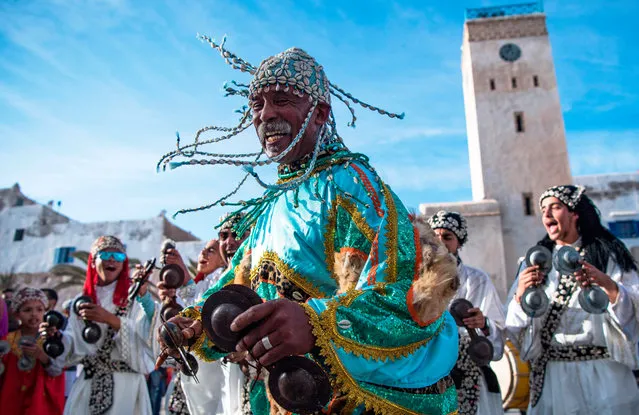
A Gnawa traditional group performs in the city of Essaouira on December 14, 2019, to celebrate the decision of adding the Gnawa culture to UNESCO's list of Intangible Cultural Heritage of Humanity. (Photo by Fadel Senna/AFP Photo)
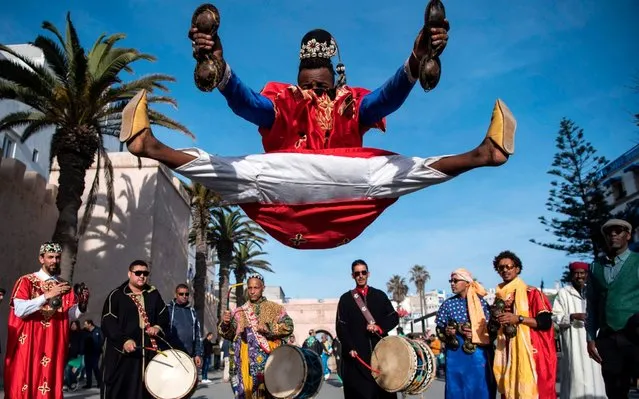
A Gnawa traditional group performs in the city of Essaouira on December 14, 2019, to celebrate the decision of adding the Gnawa culture to UNESCO's list of Intangible Cultural Heritage of Humanity. (Photo by Fadel Senna/AFP Photo)
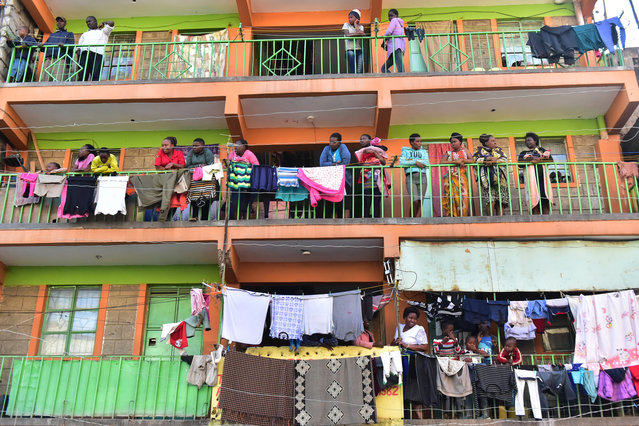
Curious onlookers stand on balconies next to the scene of a collapsed six-storey building in Nairobi, as search and rescue continue, on December 6, 2019. (Photo by Simon Maina/AFP Photo)

Horsemen head to the airport as they prepare to welcome Ethiopian Prime Minister Abiy Ahmed on his return from the Peace Nobel Prize ceremony, in Addis Ababa, on December 12, 2019. Ethiopian Prime Minister Abiy Ahmed returned to Ethiopia on December 12, 2019, after receiving the Nobel Peace Prize at a ceromony in Oslo, Norway on December 10, 2019. (Photo by Eduardo Soteras/AFP Photo)
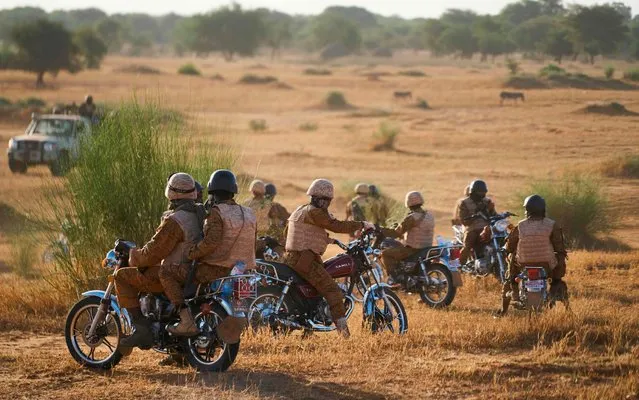
A group of soldiers of the Burkina Faso Army patrols a rural area during a joint operation with the French Army in the Soum region in northern Burkina Faso on November 10, 2019. (Photo by Michele Cattani/AFP Photo)
18 Dec 2019 00:05:00,
post received
0 comments
